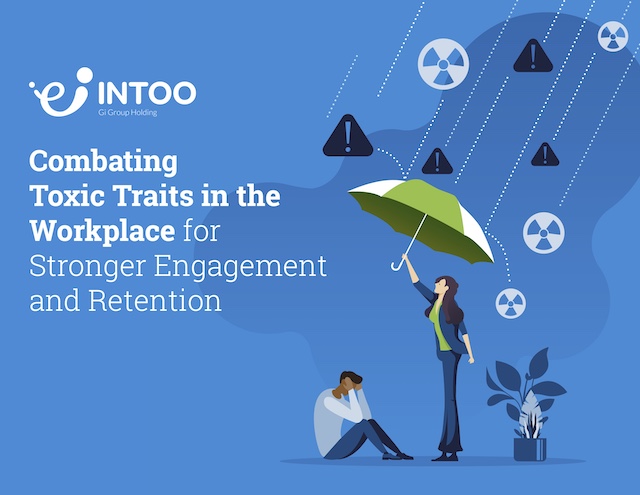Effective workplace communication can enhance productivity, foster collaboration, and promote a positive company culture. Workplace communication is the exchange of information, ideas, messages, and feedback among individuals within an organization. It plays a crucial role in ensuring businesses function effectively and efficiently.
Communication is the lifeblood of any organization, serving as the driving force behind collaboration, productivity, and overall success. The ability to convey thoughts, ideas, and information efficiently is crucial in the modern workplace. Whether it is interaction between employees and their managers, colleagues, or clients, effective communication is key to building strong relationships, achieving goals, and ensuring that time is well-spent. In an era of remote work and digital connectivity, clear and concise communication has become even more vital for teams to thrive, making it imperative for organizations to invest in training and tools that promote effective communication. In this article, we will explore the significance of workplace communication and provide insights into its different aspects.
Why Is Having Effective Communication Important in the Workplace?
Effective communication in the workplace is of paramount importance for several compelling reasons:
1. Improved productivity
Clear and efficient communication ensures that tasks and goals are understood, reducing misunderstandings, errors, and wasted time. It enables employees to work more productively and align their efforts with organizational objectives.
2. Enhanced collaboration
Effective communication fosters collaboration among team members. When employees can openly share ideas, knowledge, and feedback, they are more likely to work together to solve problems.
3. Conflict resolution
Good communication provides a platform for addressing conflicts and concerns. When issues are communicated and discussed openly, they can be resolved before they escalate, promoting a harmonious work environment.
4. Employee engagement
Employees who feel that their voices are heard and that their contributions matter are more engaged and motivated in the workplace. Effective communication promotes a sense of value and belonging, leading to higher job satisfaction and retention.
5. Clarity and direction
It ensures that organizational goals and strategies are conveyed to all employees, providing direction and a shared vision. This clarity helps employees understand their roles and how they contribute to the organization’s success.
6. Innovation and adaptability
Open communication encourages sharing new ideas and allows for timely adjustments in response to changing market conditions. It supports organizational agility and innovation.
7. Customer satisfaction
Effective communication also extends to interactions with customers and clients. A team that communicates well with customers can understand their needs and provide better service, leading to higher customer satisfaction and loyalty.
7 Types of Communication in the Workplace
Communication is a fundamental aspect of any workplace. There are various types of communication in the workplace, each serving different purposes. Here are seven types of workplace communication:
1. Communication with superiors
Effective communication with superiors, which includes managers, supervisors, and executives, is essential within any organization. This communication serves multiple functions. It involves reporting progress on tasks and projects, seeking guidance or clarification on tasks, goals, or company strategies, and discussing performance evaluations. Articulating one’s ideas, concerns, and achievements to superiors is crucial for career growth and ensuring everyone is aligned with the organization’s objectives.
2. Communication with coworkers
Constant communication among colleagues within a team or department is essential for successful collaboration. This daily interaction encompasses sharing information, brainstorming ideas, working on projects together, providing updates on individual tasks, and addressing any issues that may arise. Effective communication among colleagues promotes a harmonious work environment and ensures that everyone is on the same page, contributing to the overall productivity of the team.

3. Communication with customers or clients
Interactions with external stakeholders, such as customers and clients, are the core of the businesses. Establishing and maintaining solid relationships with these parties relies heavily on effective communication. It involves understanding their needs, addressing their concerns, providing information about products or services, and resolving any issues that may arise. Well-executed communication in this context can lead to increased customer loyalty and trust, benefiting the business in the long run.
4. Written communication
Clear and concise written communication through mediums like emails, reports, and documentation is indispensable. It ensures that information is conveyed accurately and professionally. Moreover, it provides a documented record of critical discussions, which can be referred to when needed. Effective written communication is the bedrock of a well-organized and efficient workplace.
5. Meetings and presentations
Meetings and presentations are the arenas where ideas are shared, decisions are made, and collaboration happens. Effectively articulating ideas, using engaging visuals, and encouraging active participation are crucial in these settings. They serve as channels to disseminate information, brainstorm, and collectively work towards the organization’s goals.
6. Interdepartmental communication
In a complex organizational structure, different departments often need to work together on projects and share resources. Efficient interdepartmental communication is the bridge that facilitates this cooperation. With clear and consistent communication between departments, the workflow becomes cohesive and efficient.
7. Formal communication
Official documents, policies, and announcements are examples of formal communication that provide structure and guidance within an organization. They are essential for maintaining clarity and ensuring compliance with the company’s standards. When employees have access to explicit, formal communication, it fosters a sense of stability and predictability within the organization.
10 Ways to Communicate Effectively in the Workplace
Now that we’ve explored the various types of workplace communication, here are ten ways to communicate effectively in the workplace.
1. Active listening
Actively listening means giving your undivided attention to the speaker. It involves not only hearing their words but also understanding the underlying message. It requires asking clarifying questions to ensure one has grasped the speaker’s intent. Providing feedback, such as summarizing what’s been heard, shows that the listener is engaged and helps confirm comprehension. It’s crucial that listeners refrain from interrupting the speaker and resist the urge to prepare their responses prematurely, as this can hinder effective communication and make the speaker feel unheard or disregarded.
2. Clear and concise messaging
Effective communication demands clarity and conciseness. Straightforwardly expressing ideas without unnecessary jargon or superfluous details ensures the audience can readily grasp the message. This approach minimizes the risk of misinterpretation and helps prevent confusion or overwhelm, particularly when addressing complex or unfamiliar topics. By keeping messages concise, others can more easily absorb and retain the information conveyed.
3. Using the right medium
Selecting the appropriate communication channel is vital. Different mediums have unique strengths and weaknesses. Emails are ideal for written documentation and asynchronous communication, while phone calls offer real-time interaction. Face-to-face meetings foster personal connections, but they may not always be efficient. Collaboration tools like Slack or Microsoft Teams facilitate quick, organized exchanges. Picking the suitable medium ensures that the message reaches the intended audience most effectively and efficiently.
4. Being mindful of nonverbal communication
Nonverbal cues play an important role in communication. Tone of voice, body language, and facial expressions convey emotions and attitudes. Maintaining eye contact shows attentiveness and engagement. Open body language, like uncrossed arms, signals approachability. Matching one’s tone to the message’s content and context helps avoid miscommunication. Being aware of these nonverbal elements ensures that verbal and nonverbal communication align, enhancing the clarity and effectiveness of your message.
5. Giving constructive feedback
When offering feedback to an employee, focus on specific behaviors or outcomes rather than making personal attacks. Constructive feedback centers on providing suggestions for improvement, helping the recipient understand how to enhance their performance. Criticizing actions or results rather than the person fosters a more positive and receptive atmosphere. By emphasizing constructive feedback, you contribute to personal and professional growth while maintaining a respectful and productive communication environment.
6. Showing empathy
Demonstrating empathy means not only hearing colleagues but understanding their emotions and perspectives. It’s a powerful tool for building trust and fostering positive working relationships. Acknowledging and validating their feelings and viewpoints creates an environment of support and understanding, which in turn encourages open communication and collaboration.
7. Using positive language
Positive language is crucial for effective communication. Framing messages in a cheerful and solution-oriented manner reduces the likelihood of triggering defensiveness or conflict. Instead of using harmful or accusatory language that can put others on the defensive, focusing on constructive and optimistic phrasing encourages a cooperative atmosphere and promotes problem-solving.
8. Organizing thoughts
Before important meetings or conversations, organizing one’s thoughts and creating an agenda or outline ensures that all the necessary points are covered. This structured approach not only enhances clarity but also helps to keep the discussion on track. It allows the message to be conveyed more effectively and ensures that all relevant topics are addressed.
9. Following up
Following up after a conversation or meeting is a critical aspect of effective communication. Summarizing the key points, action items, and timelines in writing clarifies and helps hold all parties accountable. It serves as a reference point for everyone involved and ensures that there is no ambiguity regarding what was discussed and what needs to be done.
10. Respecting cultural and generational differences
Recognizing that individuals from diverse backgrounds have varying communication styles and preferences is essential. Being sensitive to cultural and generational differences allows the communication to be adapted to accommodate those variances. This inclusivity and adaptability in communication style promote understanding and respect among colleagues, fostering a more harmonious and productive work environment.
Start Communicating Effectively in the Workplace Now
In conclusion, effective workplace communication is essential for any organization’s success. Whether striving to build strong relationships, achieve better results, save time, or reduce misunderstandings, honing one’s communication skills is crucial.
By investing in improving your employees’ communication skills, you can make a significant impact on their career development, which will in turn contribute to a more positive and productive work environment. Help your workforce communicate effectively in the workplace now and reap the benefits of stronger relationships, increased efficiency, and better results. Looking for other ways to strengthen your workforce? INTOO offers a wealth of career development programming, including career coaching, workshops, training, and more. Contact us today to learn how we can help you harness your team’s potential and increase retention and productivity.












